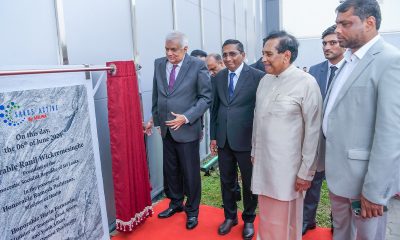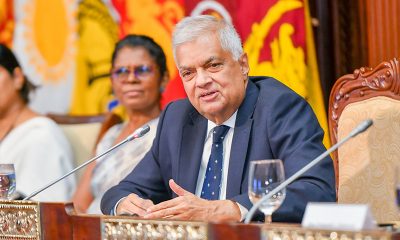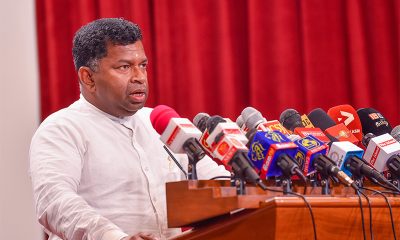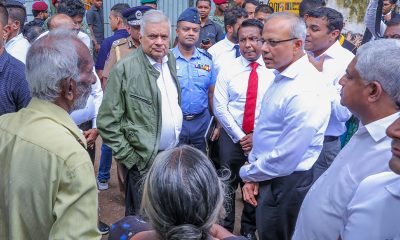Latest News
The Government’s objective is to develop Sri Lanka as a thriving nation by 2048 – President
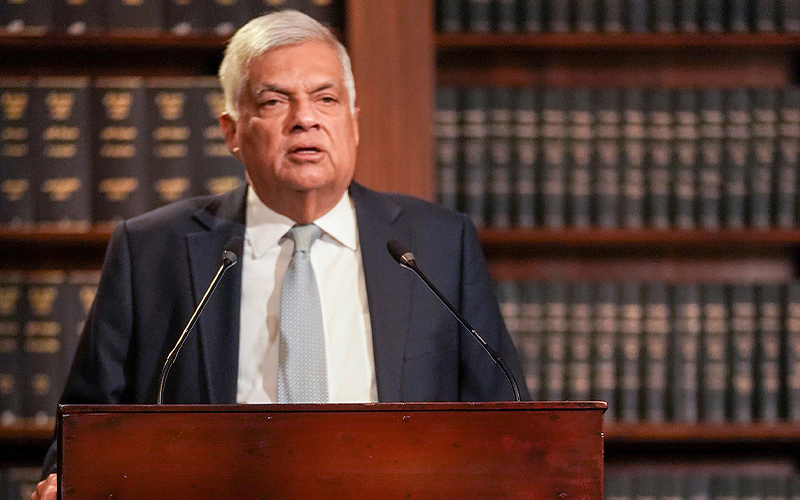
President Ranil Wickremesinghe making a special statement to the nation reiterated his commitment to prevent any regression of the country to its previous state and his determination to transform Sri Lanka into a fully developed nation by 2048.
The President explained at length the measures taken by the government in the past nine months to assist the Sri Lankan economy to recover, as well as the next stages in the state’s social, economic and political reform agenda. President Wickremesinghe also presented the operational proposal to the country to achieve the desired goals.
Following is the full statement delivered by President Ranil Wickremesinghe;
“Since the day I took charge of our nation’s economy, I wanted to ensure you that Sri Lanka’s actual economic situation was made clear and transparent. Over the recent months, I have provided regular updates on Sri Lanka’s economic state, outlined strategies to overcome our challenges, and emphasized the role each of us must play for the betterment of our nation.
We have endured numerous hardships due to a struggling economy, but we are slowly making progress towards achieving stability. Our weakened and crippled economy from the crisis is gradually regaining its footing.
This achievement is a result of the correct policies and practices my government has implemented. It is also a testament to our collective effort as a nation in rising above the many challenges and hardships that came our way.
I would like to express my heartfelt gratitude to all Sri Lankans for persevering through these hardships for the sake of our motherland. If we continue on this path for just a little longer, I am confident we will be able to establish a stable economy free from the difficulties we endured together as a nation.
Sri Lanka is now ready to embark upon a journey of collective growth and prosperity.
In what manner should we proceed on this journey? Which practices should we adopt to ensure our progress?
Today, it is my honour to share with you a roadmap detailing the steps we intend to pursue to forge a brighter and prosperous future for all Sri Lankans.
Throughout my tenure as President, I have consistently emphasized the need for comprehensive economic and social reforms in Sri Lanka. In the 2023 Budget, I highlighted several reforms that aim to restructure and modernize the nation. It is crucial that we remain committed to these reforms to build a better future for Sri Lanka.
I want to remind you that some decisions we make may not always be popular. However, it is only by pursuing policies that are right and difficult can we uplift our country once again. I can assure you that if we remain committed to reform, we can create a nation where future generations can live freely and happily.
Unfortunately, some groups involved in traditional politics are actively working to hinder our economic revival. They are spreading false information about our reform agenda and intentionally misleading the public with claims that we are selling off the country.
Throughout history, these groups have continuously resorted to fear-mongering tactics, falsely asserting that our actions are driven by a desire to sell out our nation. They have deceived many Sri Lankans in the 1950s, 1960s, 1970s, and even the 1980s, instilling an irrational fear of the country being sold away. From then until now, these groups have disrupted real progress for economic reform by perpetuating this slogan of “selling the country”.
I am confident that you will no longer be deceived by such slogans. It is imperative for all of us to work diligently and to totally devote ourselves to the upliftment of our country. Our objective is to transform into a fully developed nation on the global stage by 2048. If we fail to align our economy with the modern world and the latest trends in technology, we will regress. The consequence of failure is the country becoming an economic colony. Let us forge ahead and shape our economy in a way that enables us to compete on the global stage. Let us carry out the necessary economic reforms for the greater good of our nation.
Through these economic reforms, our aim is to rectify misguided policies, programs, and projects. Rebuilding a bankrupt nation cannot be achieved by using traditional methods. We must adopt a fresh approach and embark on a new journey of transformation.
What are the outcomes of these economic reforms?
The cost of living for all Sri Lankans will decrease, and our standards of living will rise. Is that a mistake? Is it tantamount to selling our country? These reforms generate new opportunities for businesses to grow and thrive, ranging from small-scale enterprises to large-scale ventures. Is that a mistake? Is it a country being sold?
We are working to provide necessary relief and essential facilities to the poor and the most vulnerable segments of our society. Is that a mistake? Is it a betrayal of our country?
The burden of covering losses incurred by state owned enterprises will no longer be placed on the people. Is that a mistake? Does it suggest a country’s sale?
A culture of accountability and transparency is being fostered. Is that a mistake? Does that mean the country is being sold? We are working to make Sri Lanka one of the world’s fastest-growing nations. Is that a mistake? Does that imply that the country is for sale?
The implementation of our economic reforms serves only to achieve sustainable development and prosperity for our country. Through these reforms, we will accelerate Sri Lanka’s modernization, expand our market, and encourage greater contributions from the international community toward our development.
We acknowledge that this journey is not an easy one, and we anticipate numerous challenges along the way. However, we are determined to overcome these obstacles. Our government is committed to always acting in the best interest of our country.
We will not allow anyone to drag our motherland back to where we were a year ago. Today, some individuals seem to have forgotten the hardships endured by Sri Lankans during that time. Our economy contracted by 8.7%, our foreign exchange reserves hit rock bottom, and we experienced one of the highest inflation rates in the world. Foreign loans went unpaid, pushing the country into bankruptcy. Food scarcity became a pressing issue, with people waiting in queues for days to obtain oil and gas. Agriculture suffered due to a lack of fertilizer, resulting in crop losses and helpless farmers. Businesses collapsed, leading to job losses and income sources drying up. Hospitals faced shortages of medication, schools had to close, and power cuts lasting 10-12 hours became commonplace. The country was in disarray, with people struggling to survive.
Unable to bear these hardships any longer, the people became restless and began to struggle. In the face of these tremendous challenges, I assumed the responsibility of managing the country’s economy as the Prime Minister. In such a difficult backdrop, I possessed only one source of strength: my unwavering belief and determination to safely guide our motherland across this arduous journey.
When we first took steps to stabilize the country, we implemented stringent financial controls. We recognized that our only way out of this crisis was to seek support from the International Monetary Fund (IMF). Thus, we initiated negotiations with them, which involved multiple rounds of lengthy discussions. Eventually, the IMF agreed to provide us with an Extended Credit Facility. Additionally, we embarked on programs to secure loan assistance from other financial institutions such as the World Bank and the Asian Development Bank.
During this challenging period, our neighbour India played a significant role in supporting us. Bangladesh and Japan also offered their support. Several countries, including China, India, Japan, and members of the Paris Club, agreed to restructure our debt, of which we are immensely grateful for on behalf of the Sri Lankan people. These collective efforts and collaborations are part of our commitment to achieving sustainable development and success for our country.
In our efforts to stabilize the country, we implemented strict financial controls, leading to significant cost savings. Additionally, our foreign workers have made valuable contributions to our nation-building endeavours. In the first quarter of this year, the remittances sent by foreign workers increased by 80.6% compared to 2022. Furthermore, our new tax policies have resulted in an additional income of Rs. 210 billion in the first quarter of 2023. These achievements highlight the positive impact of our measures on our economy.
Today, we are reaping the rewards of our hard work and dedication. Inflation, which had skyrocketed to 70 percent, has now decreased to 25.2 percent, lightening the burden of daily life for all of us. The entire population of Sri Lanka is experiencing a sense of relief given the improvements we made to the economy.
Now, let me explain our vision for the future and how we plan to move forward. We have built our roadmap on four key pillars that will shape our path ahead.
The 1st Pillar – Fiscal and Financial Reforms
We have successfully reached an agreement with the International Monetary Fund (IMF) regarding fiscal and financial reforms, which received approval from Parliament. We have initiated reforms in tax policies, revenue administration, and public financial management, and we will continue to pursue the successful delivery of these efforts. Our aim is to implement necessary reforms that will ensure long-term sustainability of public debt and the stability of our economy. Ultimately, we want to rebuild confidence in the Sri Lankan market.
In our pursuit of economic stability, we have implemented various cost reduction and containment measures since May 2022. We are taking further steps to minimize unnecessary expenses, emphasizing to government officials the need for prudent spending. Our approach includes:
1. Halting unnecessary expenditure,
2. Streamlining government activities to reduce costs,
3. Designing cost-effective government operations, and
4. Leveraging automation and digitalization to reduce costs while delivering quality services.
The 2nd Pillar – Investment Drive
Promoting investments play a crucial role in boosting a country’s economy. We also recognize the significance of collaboration between the public and private sectors in our journey towards economic growth. Our goal is to transform Sri Lanka into an export-oriented economy that is globally recognized, following the successful models of countries like South Korea and Singapore.
Furthermore, we aim to prioritize modern and sustainable efforts such as renewable energy, green hydrogen, and digitization. We can draw inspiration from the Andhra region of India, which has excelled in developing these areas. Such modern and sustainable initiatives are vital for the complete transformation of Sri Lanka’s economy.
Over the next few months, we will make a special invitation to the private sector to submit their own business proposals that align with our vision of modernization and sustainability. We will ensure transparency and openness by publicizing this call for proposals through mass media in a formal manner. We believe that a collaborative partnership between the public and private sectors will drive the engine to accelerate Sri Lanka’s economic growth and revival.
The selection of proposals is based on four key criteria:
1. Size of private investment,
2. Job creation,
3. Export contribution, and
4. Economic contribution.
To ensure the effective implementation of these business proposals, we will introduce a new system called the Lab methodology.
Under the Lab approach, we will bring together Government Ministers, government officials, subject matter experts, and key representatives from the private sector to collaboratively engage in detailed discussions over a period of six weeks. The aim is to collaboratively resolve any roadblocks hindering the roll-out of investments and projects by listening carefully to the private sector. During these discussions, comprehensive implementation plans will be developed, and the necessary facilities to support the implementation of these projects will be organized. Government stakeholders involved in the Labs will dedicate their full-time efforts to ensure the successful execution of these projects.
As President, I, along with the Cabinet Ministers, will actively participate in this event to demonstrate the government’s commitment to ensuring success of the Lab process.
Through the Labs, we aim to achieve three main objectives. They are to:
1. Accelerate the economic recovery through approved business proposals and projects
2. Create new employment opportunities, and to
3. Streamline the government machinery to facilitate the implementation of future projects by removing obstacles through transparent procedures.
In order to foster a conducive environment for investment, we also need to reform Sri Lanka’s trade practices, which have been structured under strict protectionist policies. It is time to remove these barriers that have discouraged investors and to promote a more open and welcoming approach.
3rd Pillar – Social Protection and Governance
We will also apply the Lab methodology to address social safety net concerns. We will engage various government ministries, departments, agencies, civil society representatives, and subject matter experts in the integration process of social security measures.
Over the years, the people of Sri Lanka have expressed three main demands: combating corruption, protecting the poor and vulnerable sections of society, and ensuring transparency in government actions and practices. We are actively working to meet these demands.
Through the Lab methodology, we will assess the adequacy of social security measures for the most vulnerable and disadvantaged sections of society. Our goal is to provide them with the necessary support and relief they require.
A special task force is being established to combat corruption across all sectors, including regulation, procurement, and political corruption. We are committed to implementing anti-corruption practices through a government mechanism that emphasizes accountability via modern techniques such as digitization.
4th Pillar – State Owned Enterprises Transformation
There are currently 430 public enterprises operating in 33 sectors of the economy. These enterprises employ 6% of the Sri Lankan population. However, many of these enterprises have garnered monopolistic positions in the market, hindering private investment. Price fixing, inefficient management, and poor entrepreneurship have weakened public finances, turning these institutions into national burdens that are dependent on the taxpayer.
Notably, entities like the Ceylon Petroleum Corporation, Ceylon Electricity Board, and Sri Lankan Air Lines have incurred significant operating losses, equivalent to 1.6% of the country’s GDP in 2021. It is unjust to burden the 22 million people of Sri Lanka with this debt. We must urgently undertake necessary reforms in our SOEs to ensure the turnaround and success of these enterprises.
We have already initiated the preparation of a restructuring plan for public enterprises. Additionally, we expect the chief officers of these enterprises to be committed to improving their performances. If they fail to meet the annual targets assigned to them, we will not hesitate to replace them with more suitable candidates.
Public Engagement
Public participation is crucial to our Labs. All outcomes from the lab discussion, including plans, analyses, and conclusions during the six-weeks will be shared with the public in a physical forum called the “Open Day”. This platform will allow the public to express their feedback to the lab outcomes and the nation’s reform efforts, of which their contributions will serve to further refine the implementation process.
I am actively taking steps to regularly present information about our reform and reorganization programs to the public. I believe that the President should make it an annual ritual to engage with the people and provide updates on our nation’s progress.
We recognize the importance of incorporating the views of all segments of society in implementing our roadmap towards growth and prosperity. After hearing from the public during the “Open Day”, we will transparently share the progress of the Labs along with the activities of the special task forces related to the economy through digital media. This will allow the public to observe the implementation of the plans in practice, and also be able to identify and resolve obstacles along the journey.
In the last quarter of this year, we will then work to unveil the national transformation plan to the public.
Following extensive efforts, we anticipate revealing the National Reorganization Plan during the final quarter of this year. This plan aims to offer the public the chance to witness the advancement of plan implementation and practices via digital media. Furthermore, it encompasses a systematic approach to shed light on challenges and barriers encountered during implementation. Consequently, it becomes feasible to swiftly identify and resolve obstacles and issues.
To coordinate the implementation of these plans, we are establishing a Presidential Delivery Bureau (PDB) comprising of high-ranking officials from both the public and private sectors. They will collaborate with the line ministries to ensure effective coordination throughout the implementation phase.
Building the future
These reforms are designed to benefit the entire population and foster the development of the entire country. We aim to enhance the living conditions of all Sri Lankans, including you. Our program is not exclusive to any particular segment but targets the entire nation. By doing so, we can enhance Sri Lanka’s international competitiveness in exports and create new opportunities for labour participation amongst the youth, leading to a fully stabilized economy within the next five years.
Ultimately, our vision is to become a fully developed country by 2048, with the responsibility for continued progress passed on to the next generation. We are preparing our youth for this role, and I have full confidence that they will lead our motherland towards this objective.
This work methodology is a collective effort to build the future for all of us and to ensure a better tomorrow for future generations to come.
Therefore, I invite all Sri Lankans to join me in this journey to create our new and shared future our beautiful country”.
Latest News
‘Bloody policies’: MSF recovers 11 bodies from Mediterranean off Libya
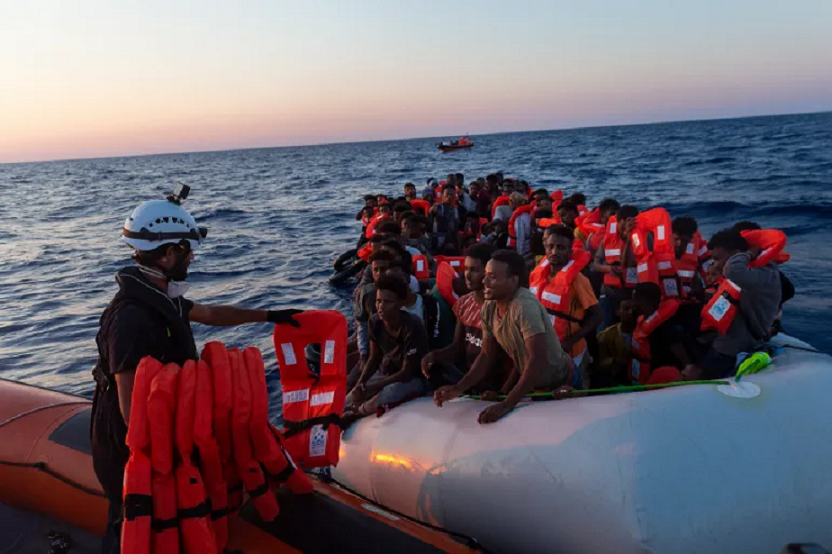
The aid group Doctors Without Borders has reported recovering 11 bodies and rescuing dozens of people off the coast of Libya as it criticised the migration policies of the North African country and European countries.
In a statement on Friday, the group, known by its French initials MSF, said its Geo Barents rescue vessel managed to recover the bodies following a search operation lasting more than nine hours after being alerted by German nongovernmental organisation Sea-Watch, which also rescues refugees and migrants.
“As we cannot determine the reason behind this tragedy, we know that people will continue to take dangerous routes in a desperate attempt to reach safety, and Europe must find safe and legal pathways for them,” MSF said in a post on X. “This catastrophe must end!”
Sea-Watch said it is unclear whether the bodies were victims of a previously unknown shipwreck, adding that they tried to contact Libya’s coastguard to go and retrieve the dead, but received no reply.
“The so-called Libyan coastguard – financed by the EU – ignored our call demanding that the bodies be recovered,” the group said.
Thousands of people trying to head from Africa to Europe use Libya as a departing point, with the Italian island of Lampedusa the nearest European destination as they undertake the dangerous journey across the Mediterranean to escape war, poverty and persecution.
Italy, which wants to put a stop to the migration stream, has said Libya and neighbouring Tunisia must do more to stop people from going to sea. It has also clamped down on the operation of the rescue ships, arguing that they encourage people to head to Europe, a charge that is denied by the charities.
Emphasising its policy on the rescue ships, Italy said on Friday that it forced the MSF rescue vessel to take the 165 people that it had saved from boats in the Mediterranean operation to the northern port of Genoa. The port was more than 650 nautical miles (1,200km) from their position and much farther than the more convenient ports in nearby Sicily, significantly delaying assistance to the rescued.
The route in the central Mediterranean is the most dangerous migrant crossing in the world, with the United Nations registering more than 20,000 deaths and disappearances in the area since 2014.
More than 3,000 refugees and migrants went missing in 2023 while attempting to use the route, according to the International Organization for Migration.
According to Italy’s interior ministry, the number of arrivals in the country has dropped in 2024 to fewer than 21,800 people since the beginning of the year, compared with close to 53,300 in the same period last year.
[Aljazeera]
Latest News
Mustafizur, Rishad, Hridoy dazzle in Bangladesh’s tight two-wicket win over Sri Lanka
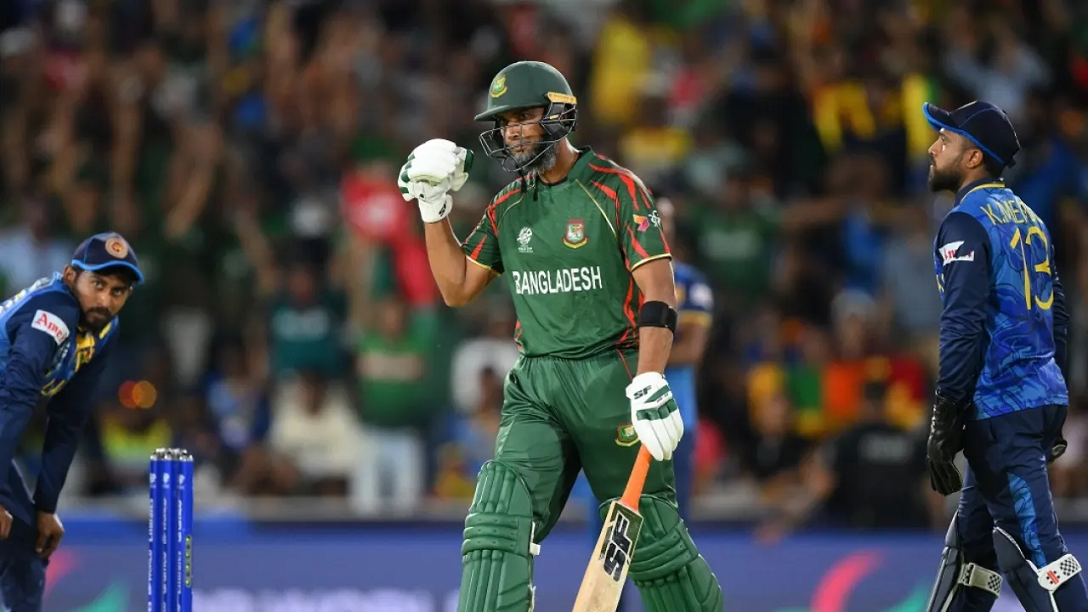
Nuwan Thushara’s last over brought Sri Lanka screaming back into the match,as he first bowled Rishad Hossain, and then nailed Taskin Ahmed in front of the stumps with a pinpoint swinging yorker. This left Bangladesh eight wickets down, with 12 runs still to get.
However, the experienced Mahmudullah was at the crease for Bangladesh, and despite some further nervy moments, pushed Bangladesh across the line off the last ball of the 19th over.
But this was a match chiefly decided by Bangladesh’s own outstanding bowling. Mustafizur Rahman was the best among them, using shorter lengths and his cutters efficiently, to claim figures of 3 for 17. Rishad Hossain’s three-for through the middle overs also kept Sri Lanka quiet.
Mustafizur was instrumental in Sri Lanka’s downward spiral through the middle overs, which culminated in a crash-and-burn end. Ultimately, their inability to find boundaries, or even rotate strike against good Bangladesh bowling resulted in their downfall. A score of 125 for 9 always seemed poor on a decent pitch, even if their bowlers made a match of it in the end.
Brief scores:
Bangladesh 125 for 8 in 19 overs (Towhid Hridoy 40, Litton Das 36; Dhanajaya de Silva 1-11, Nuwan Thushara 4-18, Wanidu Hasaranga 2-32, Matheesha Pathirana 1-27) beat Sri Lanka124 for 9 in 20 overs (Pathum Nissanka 47, Dhananjaya de Silva 21; Tanzim Hasan Sakib 1-24, Taskin Ahmed 2-25, Mustafizur Rahman 3-17, Rishad Hossain 3-22) by two wickets
[Cricinfo]
Latest News
Rashid, Farooqi and Gurbaz the stars as Afghanistan crush New Zealand
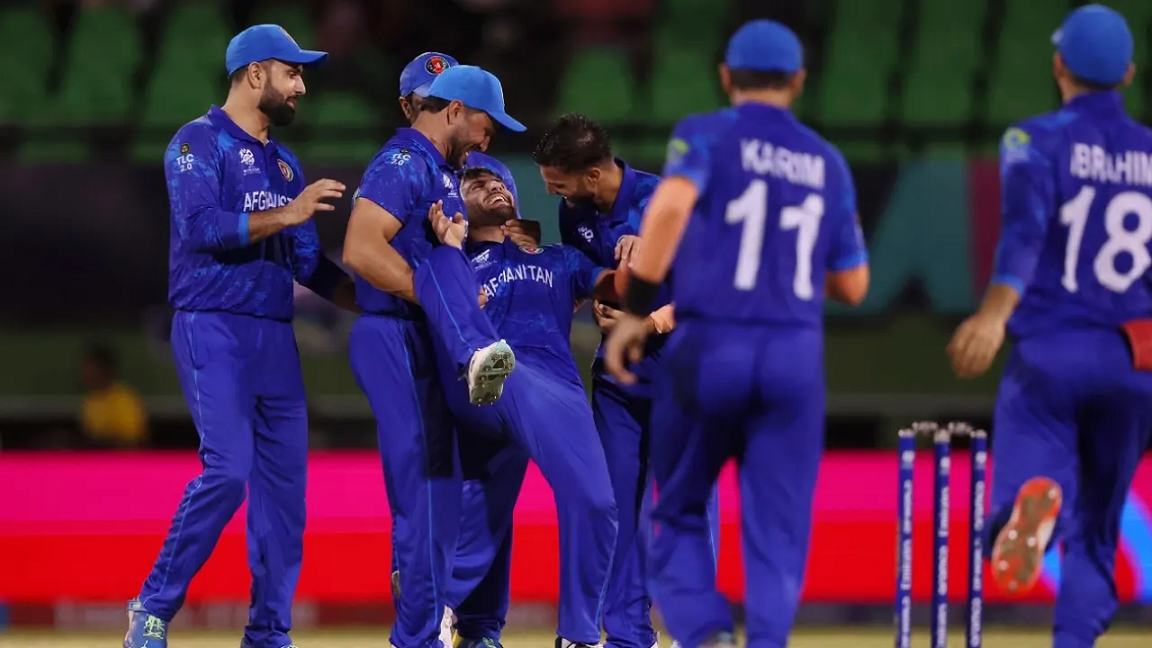
Afghanistan boosted their Super Eight chances with yet another dominating win, this time thumping New Zealand by 84 runs in Providence. Having beaten Uganda by 125 runs in their opening match, they are now at the top of Group C with a net run rate of 5.225.
After being sent in, Rahmanullah Gurbaz and Ibrahim Zadran gave Afghanistan a start of 103 in 14.3 overs. It came off the back of the 154 the pair added against Uganda, thus making them the first opening pair to register two successive century stands in the history of the T20 World Cup.
Afghanistan’s was an innings of two halves. They scored 55 for no loss in the first ten overs and 104 for 6 in the last ten, with Gurbaz contributing 80 off 56 balls. New Zealand, who had decided not to play any warm-up games, looked every bit rusty as their fielders dropped catches and missed run-out opportunities.
With the pitch assisting both seamers and spinners, chasing 160 was not going to be easy. But few would have expected New Zealand to collapse in the manner they did.
Fazalhaq Farooqi picked up three wickets in the powerplay and Rashid Khan three just after it. Eventually, both ended with identical figures of 4 for 17 as New Zealand were bowled out for 75 in the 15.2 overs. Glenn Phillips and Matt Henry were the only New Zealand batters to reach the double digits.
Trent Boult found some swing in the opening over but Gurbaz and Ibrahim showed their intent by picking up three fours off Henry from the other end. Both batters had luck on their side, too. Gurbaz got a second life when he skipped down the track to Santner and missed the ball, which went on to brush the leg stump but the bails did not budge. In the following over, Finn Allen dropped Ibrahim off Henry at the deep-square-leg boundary.
That was not all. Gurbaz got another reprieve after being involved in a miscommunication with Ibrahim. Having taken off for a single, Gurbaz had to retrace his steps and would have been run out had Conway not fumbled the throw.
Two balls later, New Zealand finally seemed to have found success when Santner pinged Ibrahim’s pads and umpire Kumar Dharmasena ruled it lbw. But the batter got the decision overturned on review as the ball was heading down the leg side. Immediately after that, Ibrahim hit Santner for an inside-out four as Afghanistan ended the powerplay on 44 for no loss.
New Zealand went against the prevailing wisdom of not bowling an offspinner when two right-hand batters at the crease, and Michael Bracewell repaid that faith by conceding only six off his first two overs.
Lockie Ferguson was even more frugal, going for five in his first two. He could have had Ibrahim off a slower full toss but a leaping Kane Williamson failed to pull off a one-handed stunner at mid-off. That meant while Afghanistan remained unscathed, they had only 55 on the board after ten overs.
Afghanistan had not hit a single six in the first ten overs, but there were five in the next three, including three in one Bracewell over as Gurbaz and Bracewell stepped on the accelerator. The pair took the side past 100 in the 14th over. New Zealand finally broke through when Ibrahim bottom-edged a short ball from Henry onto his stumps, after having been hit on the grille on the previous delivery.
Promoted to No. 3, Azmatullah Omarzai played his part with 22 off 13, which included two sixes in three balls off Henry. Mohammad Nabi fell for a first-ball duck but Gurbaz kept finding the boundary at regular intervals. However, a three-wicket, three-run final over by Boult kept Afghanistan to 159.
Farooqi gave Afghanistan a dream start with the ball. With the very first delivery of the innings, he uprooted Finn Allen’s leg stump as the ball moved in late. In the seamer’s next over, Conway pushed at one that seemed to come slower off the surface and was caught at extra cover.
The decision to give Farooqi a third over in the powerplay brought further rewards. This time, bowling around the wicket to Daryl Mitchell, he got a length delivery to just straighten and take the outside edge. Gurbaz took a regulation catch to complete the dismissal and leave New Zealand 28 for 3.
It could have been worse for New Zealand. In between, Naveen-ul-Haq had rapped Kane Williamson’s front pad after the batter had moved across to play a delivery. Afghanistan sent it upstairs for an lbw review but the umpire’s call saved the New Zealand captain.
Afghanistan did not have to wait too long for Williamson’s wicket. Rashid brought himself on after the powerplay and struck straightaway as Williamson guided one to first slip. But Rashid was just warming up. In his next over, he dismissed Mark Chapman and Bracewell off successive deliveries to leave New Zealand on 43 for 6. Chapman went for a pull and got bowled; Bracewell was late to bring his bat down and was lbw.
Phillips was New Zealand’s last hope. He did hit a couple of boundaries but was soon caught at long-on when he tried to take on Nabi. That ended any hopes of revival New Zealand might have had.
Brief scores:
Afghanistan 159 for 6 in 20 overs (Rahmanullah Gurbaz 80, Ibrahim Zadran 44, Azmatullah Omarzai 22; Trent Boult 2-22, Matt Henry 2-37, Lockie Fergusoan 1-28) beat New Zealand 75 in 15.2 overs (Glenn Phillips 18; Rashid Khan 4 for 17, Fazalhaq Farooqi 4 for 17, Mohammad Nabi 2-16) by 84 runs
[Cricinfo]




